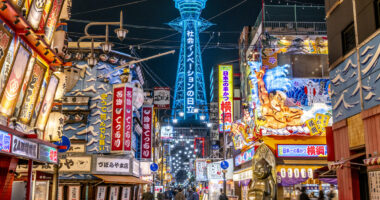From the bustling streets of Tokyo to the serene temples of Kyoto, Japan has something for everyone. As a first-time visitor, navigating the country can be a bit overwhelming. Don’t worry, we’ve got you covered! In this article, we will explore the various modes of transportation available to help you make the most of your journey.
Trains
Japan’s train system is renowned for its efficiency and punctuality. It is the backbone of public transportation in the country and offers a variety of options to suit your needs. There are two main types of trains: the Japan Rail (JR) trains and private trains.
Shinkansen (Bullet Train)
The Shinkansen, also known as the bullet train, is Japan’s high-speed rail network that connects major cities across the country. Traveling at speeds of up to 320 km/h (200 mph), the Shinkansen offers a fast and comfortable way to explore Japan. There are several types of Shinkansen services, including Nozomi, Hikari, and Kodama, with varying levels of speed and stops. Keep in mind that Japan Rail (JR) Passes are not valid on Nozomi trains.
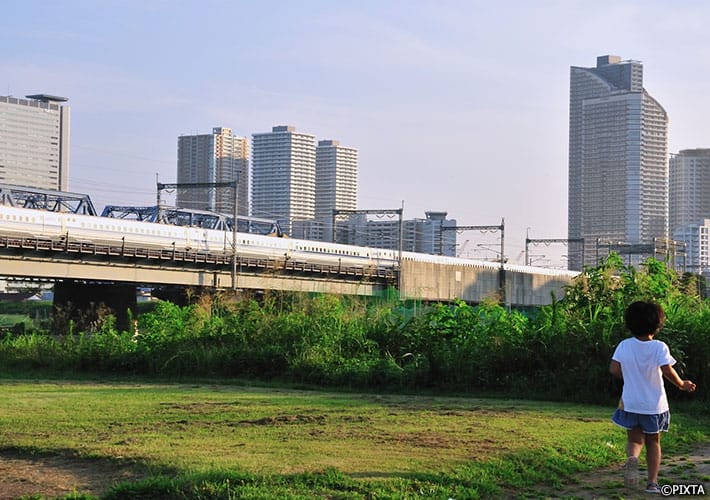
A bullet train zipping through the urban landscape of Tokyo.
JR Pass
The Japan Rail Pass (JR Pass) is a special pass available exclusively for foreign tourists visiting Japan, offering unlimited travel on Japan Railways (JR) trains, buses, and ferries for a set period (7, 14, or 21 consecutive days). It’s an excellent way to save money if you plan to travel extensively within Japan, especially on the Shinkansen. Despite the price increase coming in Fall 2023, the JR Pass can still provide significant savings for travelers who take multiple long-distance train journeys during their stay. The JR Pass must be purchased before arriving in Japan and can be bought online through authorized travel agencies or the official Japan Rail Pass website. Once in Japan, you’ll need to exchange your voucher for the actual pass at a JR office in a major train station or airport. Note that some restrictions apply, such as not being valid on Nozomi trains, as mentioned in the article.
Local and Express Trains
Aside from the Shinkansen, Japan also has an extensive network of local and express trains operated by various companies, including JR and private railways. These trains serve both urban and rural areas and are an affordable and convenient way to get around. Several passes are available which can offer savings, some of them available for purchase outside of Japan. If you’re interested in the JR Pass, the price is going up substantially in Fall 2023, so please check before making your purchase.
Subways
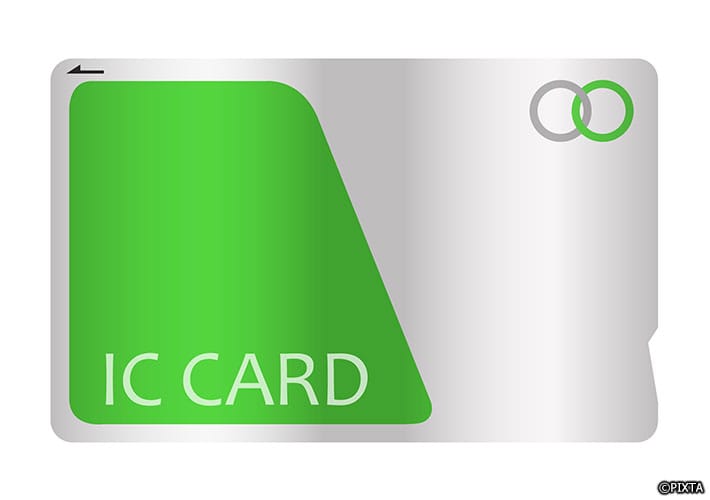
Getting an IC card in Japan is convenient for traveling and shopping.
Japan’s subway system is extensive and easy to use. Most major cities have their own subway lines, with signs and announcements often in both English and Japanese. Subway tickets can be purchased from vending machines at the station or at ticket counters. If you plan to use the subway frequently, not to mention trains and buses, consider purchasing a prepaid IC card, such as Suica or Pasmo, which can be used on both subways and buses. If you have an iPhone, you can add them to your Wallet and recharge them online with your credit card for even greater convenience.
Buses
Buses are another popular mode of transportation in Japan, especially for routes not covered by the train system. They offer an economical alternative for both local urban and long-distance rural travel, the latter being particularly useful for accessing remote areas.
Highway Buses
Highway buses connect major cities and are an affordable option for long-distance travel. These buses are comfortable and often have amenities such as reclining seats, restrooms, and Wi-Fi. Booking in advance is recommended, as seats can fill up quickly.
Local Buses

Check the information at the bus stop or ask someone if you’re not sure.
Local buses operate within cities and towns, connecting train stations with residential and tourist areas. They are a convenient way to reach popular attractions not served by trains. Just remember to have exact change or a prepaid transportation card like Suica or Pasmo when boarding.
Water Buses
Water buses provide a unique and scenic way to explore Japan’s cities and their surroundings from the water. Operating along major rivers and bays, they connect popular tourist spots, offering a picturesque alternative to land transportation. Cities like Tokyo, Osaka, and Hiroshima feature water buses with comfortable seating, large windows, and open decks for sightseeing. In Tokyo, don’t miss the famous Himiko water bus, designed by renowned manga artist Leiji Matsumoto, creator of the iconic Galaxy Express 999. Experience Japan’s urban areas and natural beauty from a new vantage point with a relaxing water bus ride.

Riding on the Himiko water bus makes for a memorable experience.
Taxis and Uber
Taxis are available in most urban areas and can be a convenient option for short distances or late-night travel when trains and buses are not running. You can wait at a taxi stand or pick one up in the street. If a taxi doesn’t stop for you, they may be off duty or headed towards a pickup. Look for the Japanese word 空車 (meaning “car available”) on the taxi.
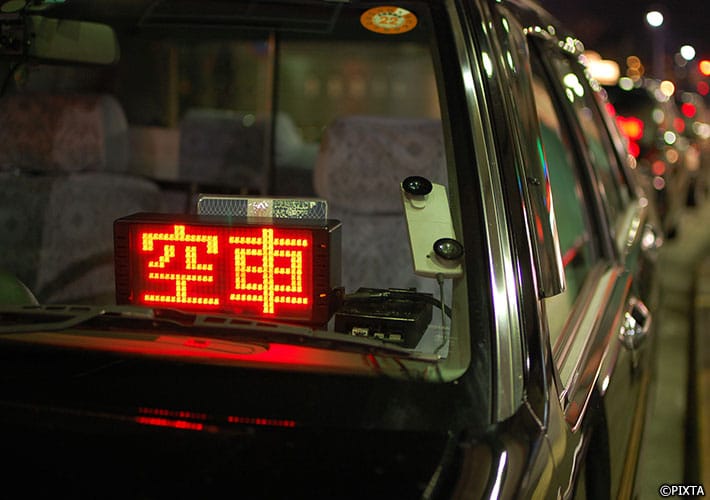
If you see this on a Japanese taxi, you know it’s available.
Keep in mind that taxis in Japan can be expensive, especially late at night, and while most drivers are honest and professional, not all speak English, so it’s a good idea to have your destination written in Japanese or show it on a map. Moreover, there’s a mandatory minimum charge between 400 to 700 JPY no matter how far you travel. There’s no tipping, so you don’t need to worry about that. Finally, never open the door to a taxi by yourself. In Japan, taxis have automatic doors which can break if they are manually forced open by the customer.

It’s a good idea to have your destination written in Japanese when you use a taxi.
Uber, while a popular choice for ride-sharing in many big cities, has a more limited presence in Japan. As of April 2023, it is available in 15 cities, including Tokyo, primarily operating as a taxi-hailing service. Although it may not always be the cheapest or fastest option compared to hailing a taxi on the street, Uber offers certain advantages for foreign visitors with limited Japanese language skills. The app allows you to book your ride in English and facilitates cashless transactions.
Rental Cars
Renting a car in Japan offers the freedom to explore remote areas and visit scenic spots at your own pace. Major cities and airports provide various rental car companies, including Toyota, Nissan, and Hertz. Renters must be at least 18 with a valid driver’s license. Check your country’s specific requirements to know whether you can use a domestic license or need an International Driving Permit (IDP). Keep in mind that driving is on the left side, and road signs are usually bilingual. For a unique experience, consider renting a camping car to immerse yourself in Japan’s beautiful landscapes. Rental cars are an excellent way to discover Japan’s hidden gems and charming rural towns.
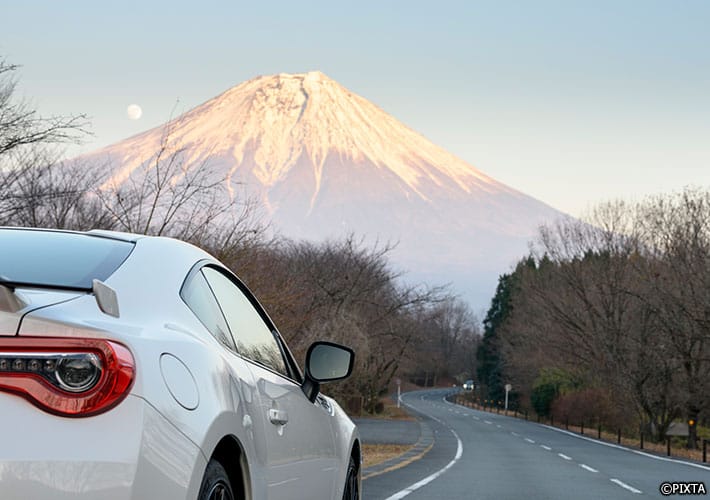
Renting a car makes it easier to explore more of rural Japan.
Bicycles
Cycling is a popular and eco-friendly way to explore Japan, especially in cities like Kyoto and Tokyo, where rental bikes are readily available. Many cities have designated bike lanes, making it safe and convenient to cycle around. Just remember to follow local traffic rules and always lock your bike when not in use.
Electric Kick Scooters
Electric kick scooters have gained popularity in Japan, particularly in major cities like Tokyo and Osaka. LUUP, a prominent service provider, operates stations throughout these cities, offering a fun and eco-friendly way to explore urban areas. These compact, battery-powered scooters are perfect for short trips or navigating crowded streets. With new regulations being introduced on July 1, 2023, as long as you’re 16 or older, you won’t need to have a driver’s license or wear a helmet, similar to bicycles. With electric kick scooters increasingly becoming a popular mode of transportation, tourists can experience a unique and convenient way to explore Japan’s major cities.
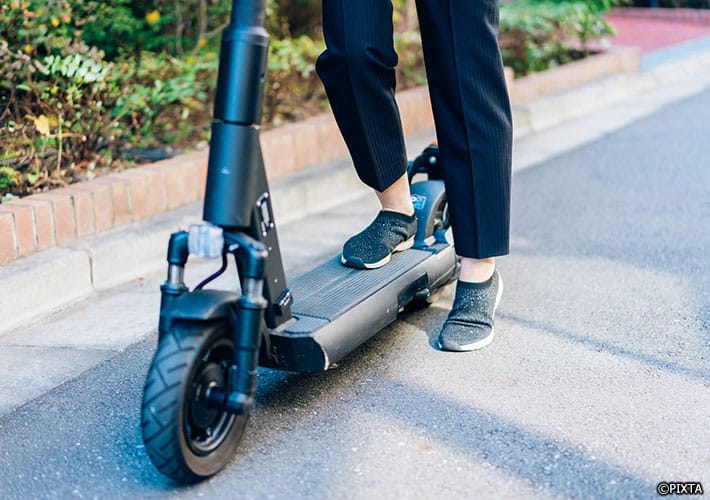
Electric kick scooters are increasingly popular in Japan.
Ferries
Ferries connect Japan’s main islands and offer a unique way to experience the country’s stunning coastal scenery. Some popular ferry routes include Tokyo to Hokkaido, Osaka to Kyushu, and Hiroshima to Shikoku. Ferries range from basic to luxurious, with options like private cabins and onboard restaurants.
Domestic Flights
For those looking to cover long distances in a short time, domestic flights can be a convenient option. Japan has a robust network of domestic airports, with carriers like Japan Airlines (JAL), All Nippon Airways (ANA), and low-cost carriers such as Peach Aviation and Jetstar Japan. Booking in advance or during sales periods can result in significant savings on airfare.
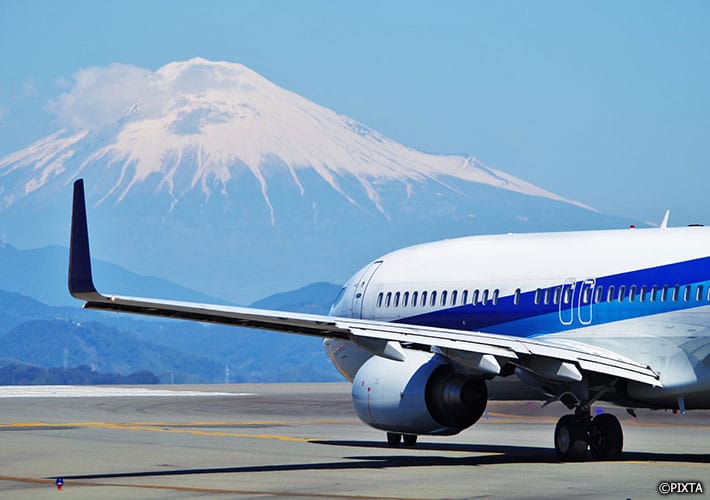
If you don’t care much for the scenic route, why not hop on a plane?
Walking
Finally, don’t underestimate the power of walking! Japan is a pedestrian-friendly country, with well-maintained sidewalks and picturesque streets. Walking can be the perfect way to soak in the local atmosphere, discover hidden gems, and experience Japan’s unique blend of traditional and modern culture.

Japan is a pedestrian-friendly country.
Tips for Traveling in Japan
- Plan ahead: Research transportation options before your trip and have a general idea of the routes you’ll need to take.
- Purchase a pass: If you plan to visit multiple cities, a pass may save you money.
- Get an IC card: Prepaid IC cards can be convenient for frequent travelers on subways and buses.
- Use Google Maps or another map app: Google Maps, for example, is available in Japan and can be helpful for navigating the transportation system.
- Learn a bit of Japanese: Knowing some basic Japanese phrases can be helpful when communicating with locals or asking for directions.
In conclusion, Japan offers an impressive array of transportation options to suit every traveler’s needs and preferences. By familiarizing yourself with the various modes of transport, you can navigate this enchanting country with ease and make the most of your journey. Whether you choose to zip across the country on a Shinkansen or leisurely explore the streets by bicycle, Japan’s efficient and diverse transportation network ensures that your adventure will be a memorable one. Safe travels and enjoy your time in Japan!





